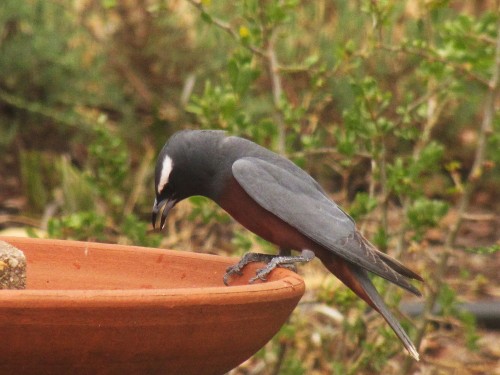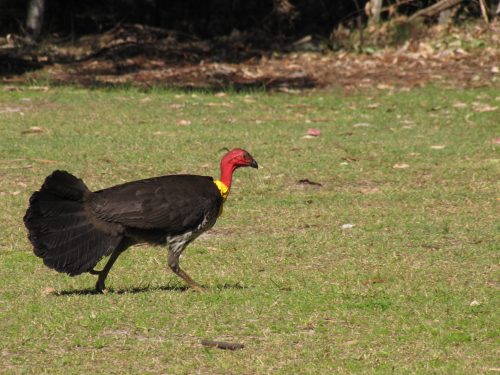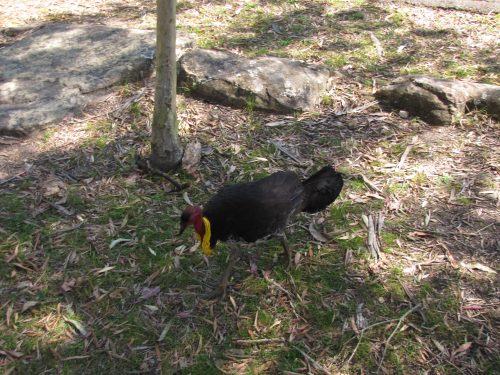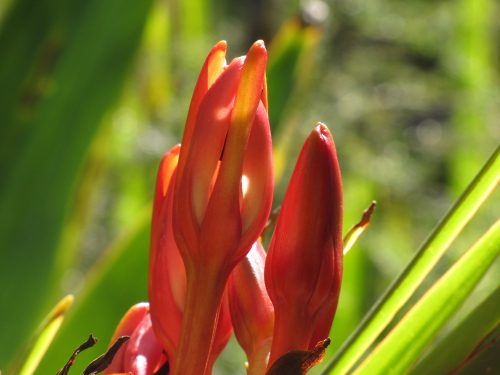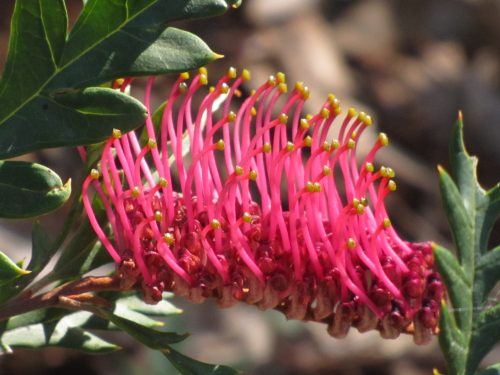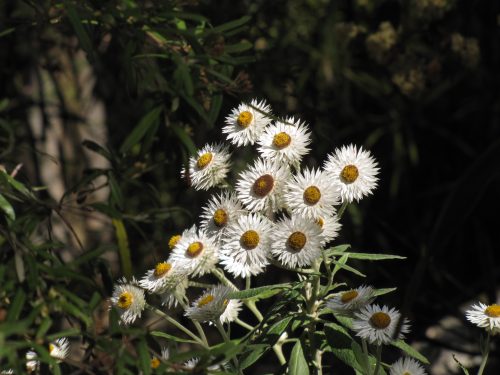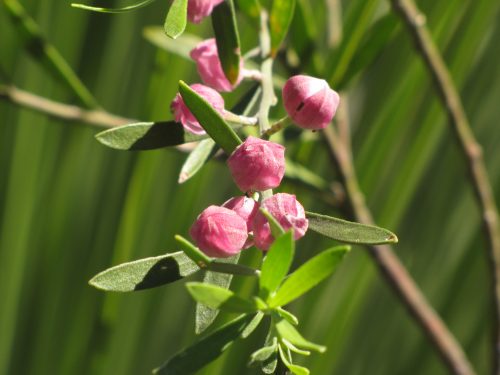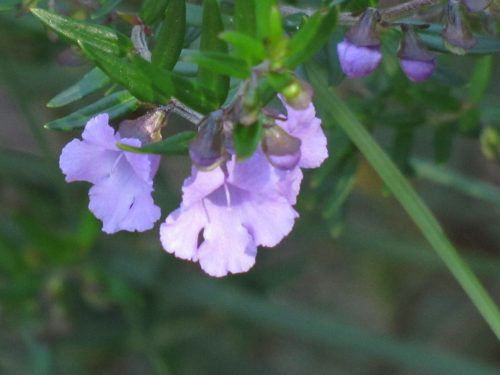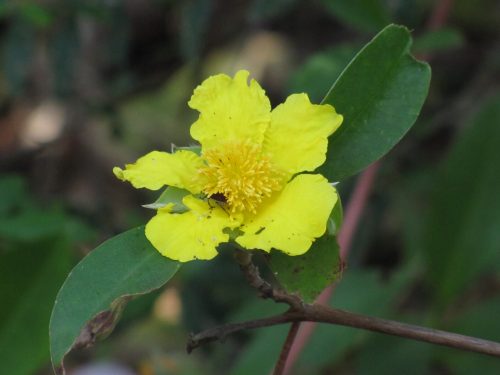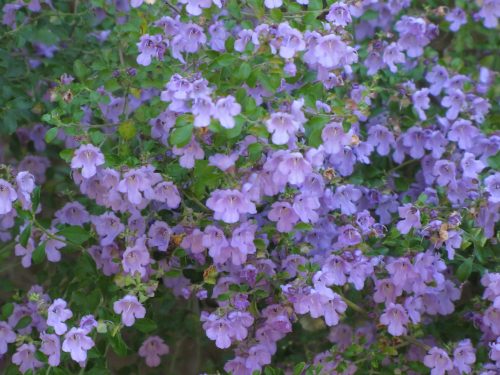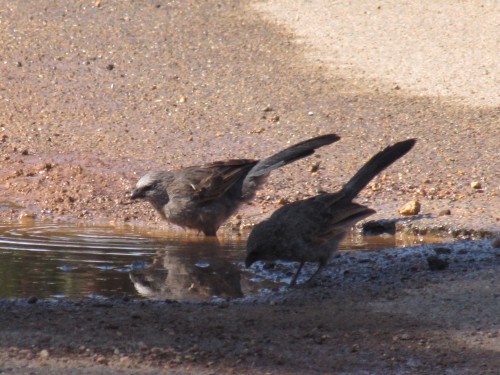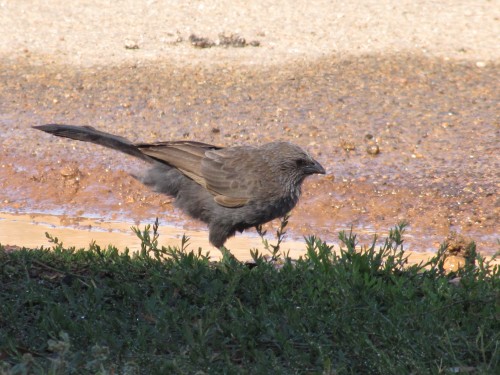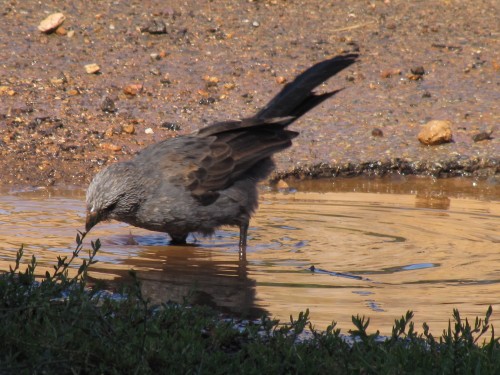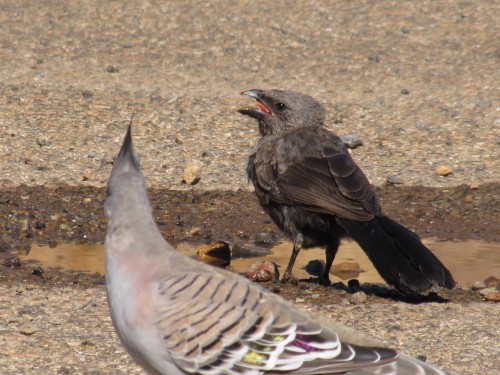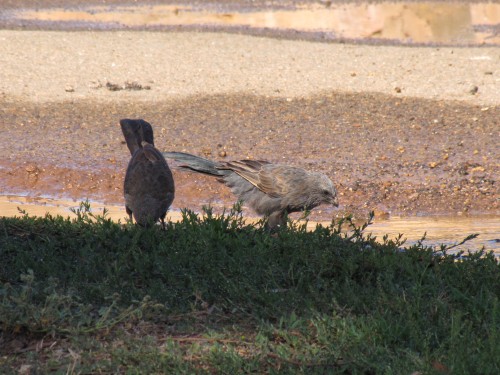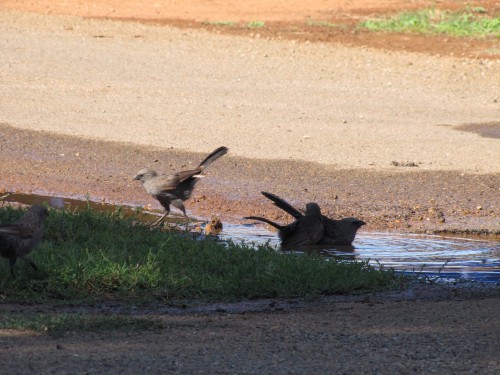Give the birds a drink
It has been a year of great weather contrasts this year in South Australia, and in other parts of the country too. At various times it has been freezing cold, fiery hot, bucketing with rain, wild storms and everything in between. We have also had the occasional beautiful day as well. Our state has had terrible bushfires, devastating floods, power blackouts from storms, crop damage due to large hail and silently creeping frosts.
Now we are about to feel the full force of summer weather. Christmas Day tomorrow promises temperatures in the low 40s (40C = 104F). In fact. our capital city Adelaide is forecast to be the hottest capital city in the world on Christmas Day. Still, at this time of the year, we expect some days in the 40s and many days in the 30s.
Heat and birds
The heat can adversely affect our birdlife here in Australia. One of the best things people can do in these hot conditions is to put out clean water for the birds. I have several birdbaths dedicated to the birds in our garden. A constant stream of birds come to have a bath or a drink on hot days. Even on mild days, the bowls are very popular.
Place the bird bath in a shady location near to a tree or bush. This can help protect the smaller species from birds of prey; it gives them a place to escape. It can be on the ground but is better if it is elevated a little. This will give the birds a clear view of any approaching cats.
Try to remember to clean the bird bath regularly, and during our hot weather this summer, top it up every day.
Photography
I have found over many years that having a bird bath near a window makes it easy to get good photographs of the birds while they are drinking or bathing. My wife and I find it very relaxing sitting in a cool room on a hot day, watching the parade of birds coming to drink.
Further reading:
- Time for a bath – a list of birds and animals we have observed at our bird baths
- The importance of bird baths – another article about bird baths
Good birding,
Trevor
A cheeky Australian Brush Turkey
Earlier this year my wife and I travelled to Sydney to visit our son and his family. We always enjoy the long trip because when we get there our grandchildren are always so pleased to see us. We love spending time with them. On this occasion, we went for a drive with our son to the Ku Ring Gai Wildflower Gardens in St Ives. We try to get there every time we visit Sydney. The wildflowers are usually very interesting, and sometimes the birding can be good too.
On this occasion, we were pestered by an Australian Brush Turkey (see photo above). It came wandering through the picnic area where we were sitting having a snack for afternoon tea. I guess it thought that we were good for a handout. We had some biscuits but the bird was out of luck. We don’t feed our native birds because human food can be dangerous – even deadly – to them.
In frustration, the turkey decided that there must be something it could salvage from our bags. My camera bag was sitting on the grass no more than 30 centimetres from my son, but this didn’t deter it. The cheeky bird pecked at it, thinking it might find something inside. It was out of luck.
These gardens are wonderful for exploring because there are many walking and cycling tracks throughout the park. We have visited on many occasions and there always seems to be something flowering. Below I have posted a few of the flower photos I took on this visit. These are just a small sample of the many plants in this location.
Further reading:
- Five reasons to love Brush Turkeys – from the ABC website
Is that terrible noise actually a bird call?
I am writing this while visiting my son and family in Sydney. We do this several times every year and really enjoy the times we spend with our two grandchildren. It always affords me good opportunities to see birds here, on the journey over from South Australia, and during the return trip. On the first Saturday we were here, my son was washing the car in the back yard and I was there chatting with him. I also had an eye on the children performing on the trampoline. We all stopped what we were doing when we heard a bird call. My first thought was, “Is that terrible noise actually a bird call?
I could see the two birds in question in the street tree a few metres away. Although they were high up in the tree, I had a clear view of them. i didn’t have my camera with me – it was in our locked car 30 metres away – nor did I have my binoculars – which were also in the car. It didn’t matter; I instantly identified the birds as Channel-billed Cuckoos. This was the first time I had actually seen this species, so it counted as a lifer.
I was able to watch them for about a minute as they called raucously. Various other species were mobbing them, trying to get them to fly away. These included Noisy Miners, Rainbow Lorikeets, Australian Magpies, Pied Currawongs and several Australian Ravens. These latter three are all hosts to this cuckoo species, so I am not surprised that they were keen to see them off elsewhere.
During our four weeks here in Sydney I have seen this species several more times, and heard them calling around here on many more occasions. I have learned that although they are not a nocturnal species, they will often call during the night during the breeding season. That must be very annoying to anyone trying to sleep. Thankfully, we do not have this species where I live in South Australia.
You can learn more about this parasitic species and see a photo of it on the Birds in Backyards site. There is also a short sound recording of the call.
Good birding,
Trevor
I was attacked by a duck
Earlier this week my wife and I took a short three-hour break from being with our grandchildren and family here in Sydney. We enjoy visiting Lane Cove National Park just north of the CBD. It is also the closest park to where our son lives, being only a ten-minute drive away.
We packed our lunch, a thermos, some fruit and my camera and binoculars. Can’t forget the binoculars – it’s only happened to me once in all my many years of birding. I also forgot my camera that day, but despite these drawbacks, I still managed some great birding.
After deciding on a spot to set up our folding chairs overlooking the river, we had a late morning cuppa. We were immediately joined by a Crimson Rosella and an Eastern Rosella perched in the tree above us. I scrambled for the camera, but they flew off before I managed to get the camera ready.
A few minutes later our peaceful relaxation was disturbed by the raucous calls of a small flock of Sulphur-crested Cockatoos flying overhead. I then noticed one of them perched at the entrance of a large hollow in a nearby gum tree. Every few seconds he would screech noisily, raising his wings as he called. Something was annoying him – not sure what.
Within a few minutes, we were joined in our picnic by several Pied Currawongs. They eyed off our mugs and bags looking for something to gobble up. They were not successful. Neither were the Laughing Kookaburras which also joined the party.
Earlier, as we pulled into the car park, I noticed a walking trail leading off up the hill. I remember walking that trail with other family members one Christmas some years ago on another visit. I checked my bird database; it was December 2008. It was time to investigate this track once again. Ignoring the hip and leg pain caused by the intervening years, I steadily climbed the track until I had a good view of the river below.
Numerous small brown birds chirped away in the vegetation, but none posed long enough for photos – and not even long enough for good views through my binoculars. Most of them were undoubtedly Brown Thornbills, a species I have seen here a few times before. The only other good sighting was a very brief view of a solitary Red-browed Finch. Never mind – I managed a few good photos of some flowers and a lovely butterfly. I left by butterfly book home so I can’t identify it.
As we were leaving, I drove slowly through the park to the exit gate. This took us quite close to the Lane Cove river at times. Not far from the gate I was suddenly aware of a male Australian Wood Duck heading aggressively towards our car as we passed by, head down, neck stretched out and I think he was hissing. He looked quite fierce for a few seconds. Pity I didn’t get this on my camera. This reminded me of another incident on the other side of the river a few days earlier. Another male Australian Wood Duck hissed at me in a similar fashion. I understood completely; he was guarding the female and three juveniles feeding nearby.
Good birding,
Trevor
PS: why not join my regular monthly newsletter by subscription? Details are to be found below the comments.
Apostlebirds just puddling around
Over recent post I have written about some birding I did while visiting family in Peterborough in early March. Peterborough is in the mid-north of South Australia and is just over three hours drive from home in Murray Bridge which is south-east of Adelaide. We were staying with family and while there my wife attended a quilting seminar.
Early one morning during our stay I headed off to do some birding before the heat of the day. One of the places I often visit while in the town is Victoria Park. This park has an artificial lake and is adjacent to the caravan park and the swimming pool. It is one of several quite reliable places to see Apostlebirds.
Apostlebirds are quite common in some other states, especially New South Wales. In South Australia, however, the species is uncommon. It can only be found in about a dozen or so locations in the whole state. Recent observations could indicate that it is becoming more common and is extending its range.
There appear to be several family groups in and around the town of Peterborough. These groups can be fairly mobile over quite a range covering most of the town and the immediate environs. One of the most reliable spots seems to be around Victoria Park where I took these photos, and in or near the grounds of the hospital.
As we were approaching the town late in the afternoon of the previous day, we encountered a heavy downpour as we drove along. I actually had to reduce the car’s speed to drive safely. The next morning, there were still quite a few puddles left around town, including a few large ones in the park. The Apostlebirds were having a great time paddling in the water, as were several other species. I didn’t stay long enough to see if they took advantage of the puddles to make one of their mud nests. I guess that this group didn’t really need to because they have a constant supply of mud from the edges of the lake only 20 metres from where these shots were taken.
